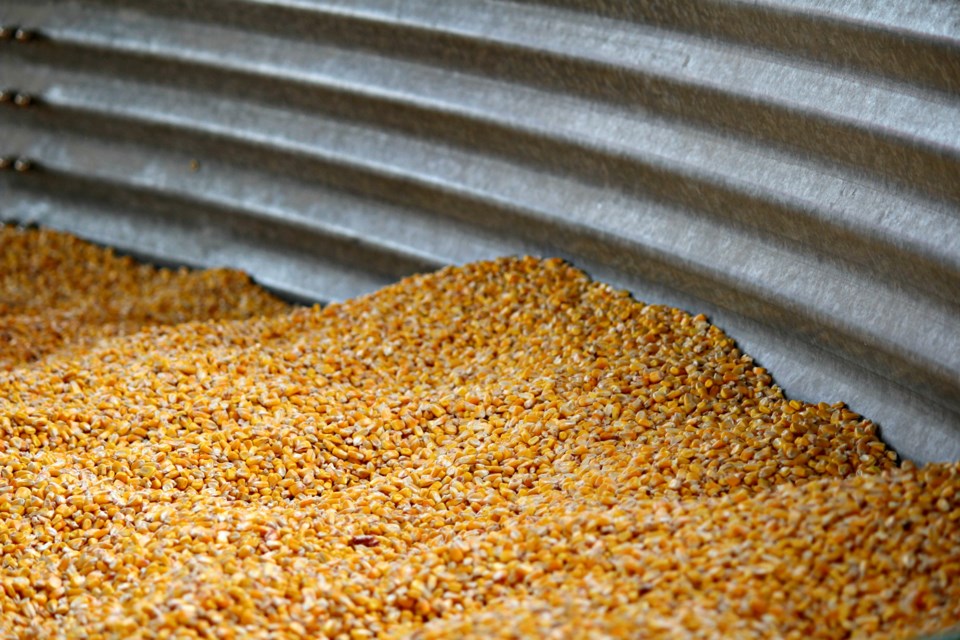China is using more corn in feed rations, which could result in lower feed barley prices in Western Canada, says an analyst.
“Feed mills have resumed mixing more corn in feed rations as higher prices for wheat and sorghum reduce demand for corn alternatives,” the U.S. Department of Agriculture’s Foreign Agricultural Service (FAS) said in a recent report.
Mills are using more corn due to higher Chinese production of the commodity and falling import prices.
China’s corn production in 2022-23 is pegged at 277.2 million tonnes, a 4.6 million tonne increase over the previous year.
“Feed mills report more corn in rations each month since July 2022,” according to the FAS report.
Compound feed contained an average of 35 percent corn in the first 11 months of 2022, which is four percent higher than 2021 but still well below the more traditional ratio of 50 to 55 percent.
Wheat is selling for US$55 per tonne more than corn, which has pushed wheat out of rations.
China holds contracts for 3.7 million tonnes of U.S. corn for delivery in 2022-23, 70 percent less than the same time last year.
The country is instead turning to Brazil for its corn imports, said the FAS.
China recently relaxed its phytosanitary protocol regarding Brazilian corn, approving more than 130 Brazilian facilities for export in October 2022.
Brazilian corn was about $23 per tonne cheaper than U.S. corn for January delivery.
Brennan Turner, an independent grain industry analyst, thinks the rise in corn use in China could hurt Canadian feed barley exports to that country.
“There’s a good chance it could pull back a little bit,” he said.
Strong exports to China have helped keep Canadian feed barley prices elevated.
Turner also thinks there will be more price pressure from U.S. corn in Alberta’s feedlot alley as Brazil continues to displace U.S. corn in China.
He doesn’t expect increased Chinese corn demand to have much impact on Canadian wheat prices.
“Does corn compete with hard red spring wheat or durum wheat? No, obviously it doesn’t,” he said.
Chuck Penner, analyst with LeftField Commodity Research, recently reported that Chinese feed pea demand has evaporated.
Canada was selling boatloads of peas to China every month in 2020-21 because yellow pea prices were well below soybean meal prices at that time.
He noted in a January presentation at Crop Production Week that soymeal prices were starting to rise again, which could soon trigger renewed yellow pea demand from China’s feed sector.
The Dim Sums Blog noted that China was once a big exporter of corn, but that shifted around 2010 when it started to import the commodity.
“Twenty years ago, China exported 16.5 million tonnes of corn, but in 2022 China imported 20.5 million tonnes and will probably import a similar quantity this year,” stated the blog in a recent post.
China can import up to 7.2 million tonnes of corn at a one percent tariff. Anything outside that tariff rate quota (TRQ) is assessed a 65 percent tariff.
China has gone from being a sizeable exporter of corn to a major importer of the commodity. The country imported 20.6 million tonnes of the crop in 2022 and is likely to bring in similar volumes in 2023, according to the Dim Sums Blog. | Source: China customs statistics and the Dim Sums Blog
The anonymous author of the blog suspects that some companies are being allowed to import beyond the TRQ without being assessed the 65 percent duty because that big of a duty would usually shut down trade.
“China’s demand for imported corn would be even larger if the high cost of corn were not pushing the price of final products so high that imports of meat are rising,” said Dim Sums.
Prospective importers must apply every September for a share of the following years’ quota.
There were 1,230 applicants for this year’s quota, up from 778 three years ago, an indication of the growing demand for corn imports, according to Dim Sums.
Ninety percent of the applicants produced either feed or livestock. The rest were ethanol plants, amino acid manufacturers and other industrial users.
Just about every major corn user in China applied. The applicants had a combined total of 378 million tonnes of corn processing capacity, well above the USDA’s estimate of 297 million tonnes of domestic consumption.
Dim Sums notes that capacity should exceed domestic consumption, but probably not by that much, suggesting there is potential for China to use a lot more corn than the USDA is estimating.
Contact [email protected]



